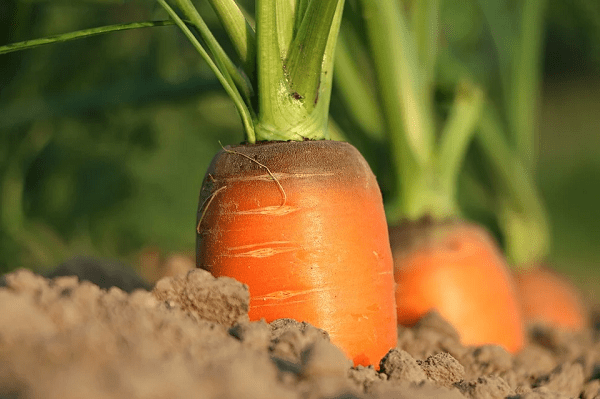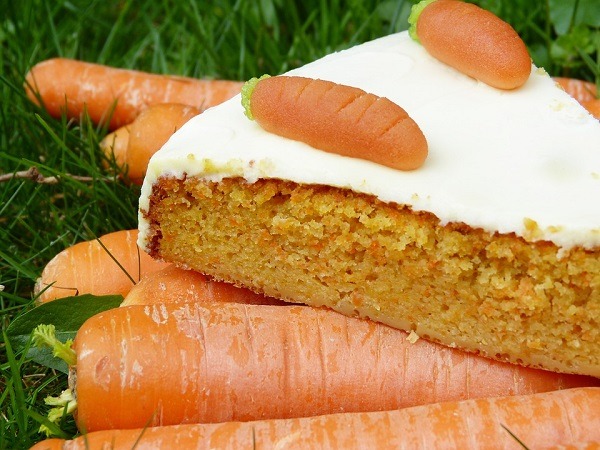Among many healthiest and most eaten vegetables, carrots are one of the easiest to grow. It will give you abundant crops when you provide them loose, rich soil free of clods and stones and sandy soil during the cold months-spring and fall (carrots can tolerate frost). It will take about 2-4 months to ready for harvest, depending on the variety and local growing conditions. Carrots are also frost tolerant, so carrots can be grown any time of the year if you grow them in containers or raised beds or a plastic tunnel for protection. Plant them in the spring and summer for a continuous supply of carrots through fall!
Ideal for growing varieties are the short and finger-size carrots, which mature in about 50 days: pick from any of these short, round, and fingerling varieties:
- Amsterdam ‘Minicor’ (ready in 55 days)
- Chantenay ‘Red Cored’ (ready in 70 days)
- ‘Nantes Half-Long’ (ready in 70 days)
- Nantes ‘Touchon’ (ready in 65 days)
- ‘Parmex’ (ready in 50 days)
- ‘Thumbelina’ (ready in 60 days)
EASY STEPS TO GROW CARROTS
Follow these basic steps in growing carrots like a pro.
Step 1: Ready the planting bed
A good planting bed can be a raised bed or a half-barrel, or other container filled with a quality planting mix. Prepare it by preparing at least 12 inches of soil depth. Loose soil is excellent for carrots, but if your soil is heavy with clay, add sand and well-aged compost to the bed and mix them using a garden fork. Clear the bed of clods and stones, which can cause carrot roots to fork or grow twisted.
Sprinkle bone meal across the bed because it’s rich in phosphorus, which encourages root growth, but don’t add manure to the soil bed before growing carrots as the nitrogen in manure will cause carrots to grow hairy roots. Water the bed deeply and wait for a day or two before sowing carrots seeds. Moist the soil evenly for the fastest germination and growth.
Step 2: Sow the seeds
Carrot seeds are tiny, so there is a tendency to over-sow the planting bed or container. To avoid this, you can try mixing carrot seeds with sand in the palm of your hand for an easier sprinkling of the seeds across the bed. Another alternative is to use pelletized carrot seeds that can be held easier and sown one by one, or use a seed tape—thin paper tape on which carrot seeds are evenly spaced, so you do not need to thin seedlings later on.
Thinly and evenly sow the seeds (at least an inch spacing) across the bed or down the row. During the growing period, rows next to weeping drip lines guarantee even moisture. To provide a light covering for the seeds, give ¼ inch peat moss or potting soil. With your hand’s heel, gently press down on the soil-covered seed to ensure seeds make good contact with the soil, which is essential for germination.
Step 3: Protect the seeds
The shallow sown seeds must be protected from the heavy rain pours, so blanket the bed with floating row covers. Meanwhile, during the hot and dry days, use burlap strips to cover the planting beds or rows (sprinkle the burlap with water to keep the seedbed just moist until seeds sprout). Check your protective cover every day. Remove the burlap when seeds start to sprout. Floating row covers can remain in place when temperatures dip below 40°F in your area.
Step 4: Maintain a moist and weed-free growing carrot
Keep the planting beds moist by sprinkling water once or twice daily with a fine spray for the first couple of weeks until the seeds sprout and until they are well-rooted.
When the roots begin to grow, water the plant deeply for continuous, even growth. Deep watering will keep the soil moist, and crops like carrots follow the moisture into the soil. It will also encourage carrot tap roots to grow straight down. You will know if it’s time for watering when the soil dries out.
Pull-out weeds from the beds as they compete with carrots for soil moisture and growing space.
Step 5: Thin the seedlings and eat
Thinning of the growing carrots will allow full root growth. Thin carrots 1 inch apart by gently lifting seedlings that are too close to each other. You can cut off the tops at the soil level with garden scissors before tap roots begin to develop. You may add the thinning to your salads.
Carrots are ready for harvest, and once roots are about ½ inch across or more, they will be sweet and tasty enough to eat. Whole baby carrots can be added to salads.



